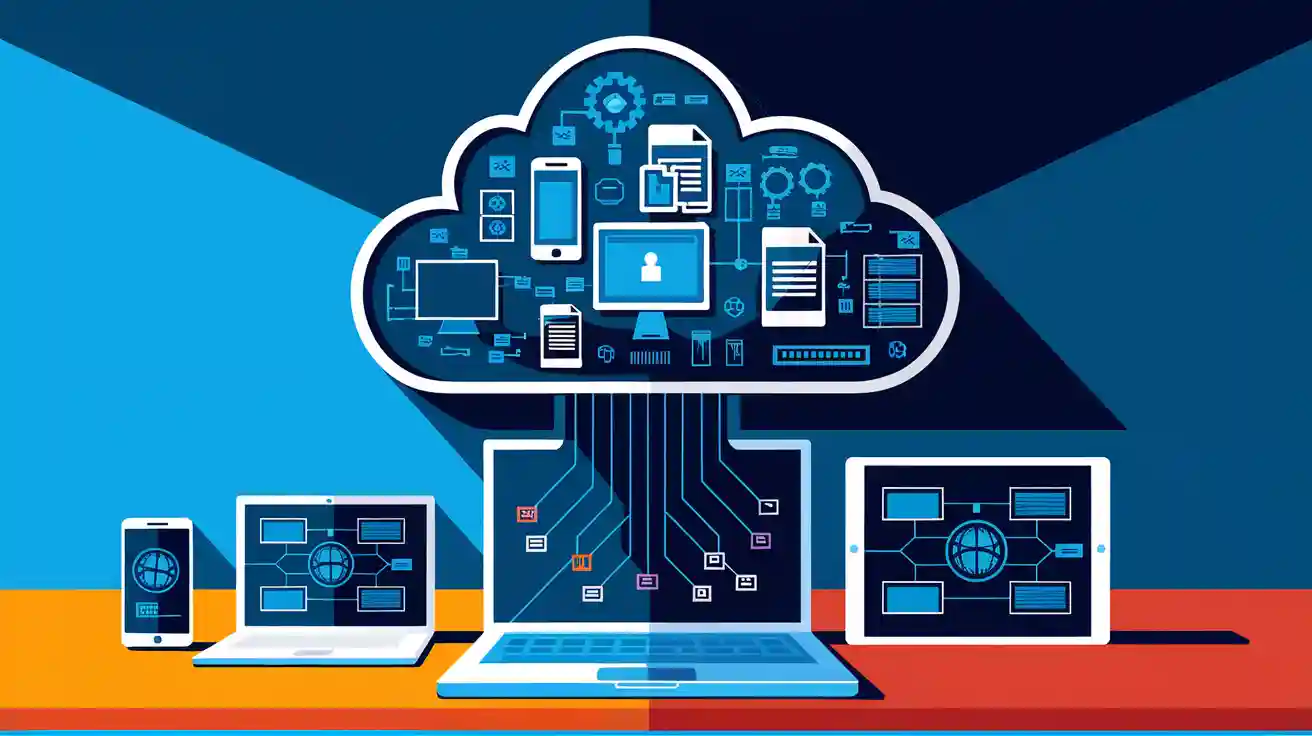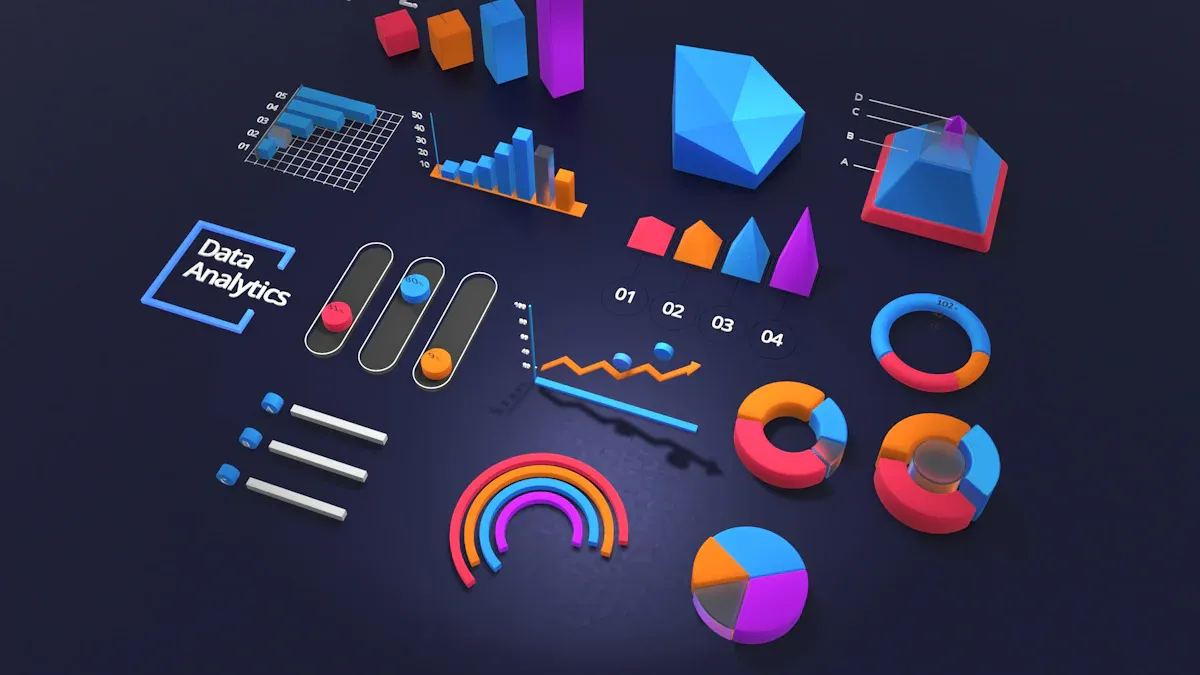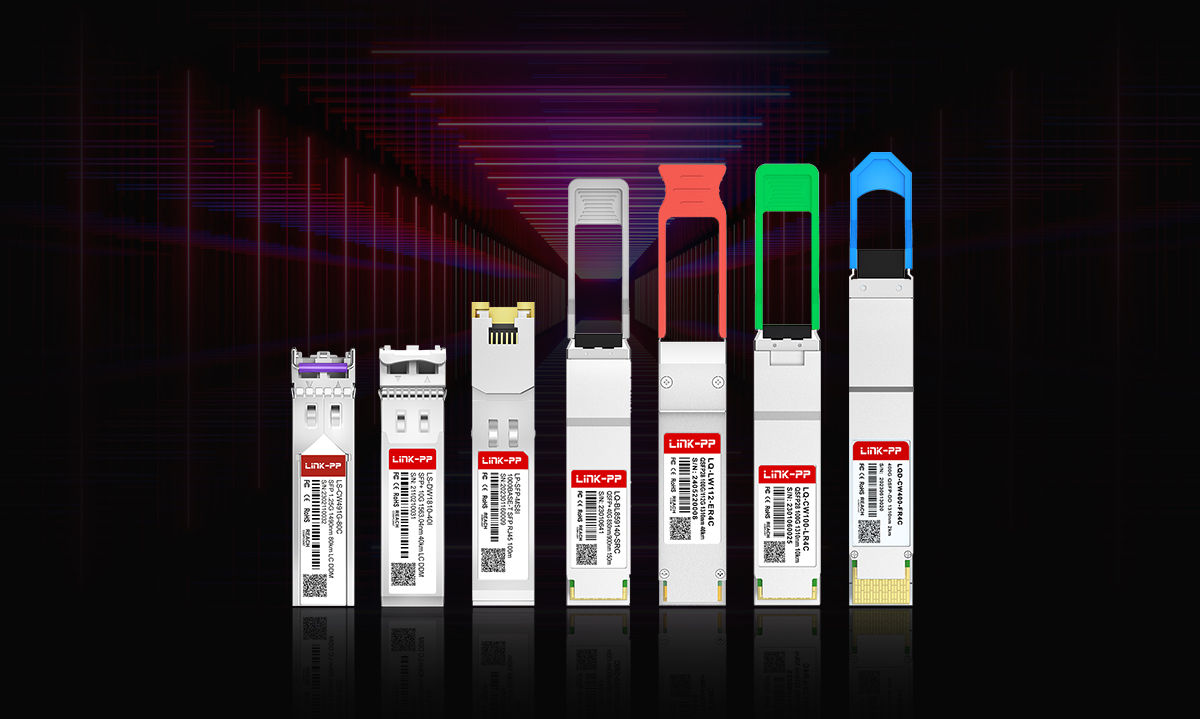
The term "cloud computing" is ubiquitous, yet its true meaning often remains shrouded in, well, cloudiness! Is it just storing files online? Is it magic internet servers? This comprehensive guide cuts through the buzzwords to explain what cloud computing really is, how it fundamentally works, the different types of services and deployments available, its undeniable benefits and potential challenges, and crucially, how it underpins nearly every digital experience we have today. Whether you're a tech novice, a business decision-maker, or an IT professional, understanding the cloud is essential in our interconnected world. We'll also touch upon the critical role of high-performance infrastructure, including cutting-edge optical transceivers from innovators like LINK-PP, in making the cloud experience seamless and powerful.
☁️ What Exactly Is Cloud Computing? Defining the Digital Utility
At its core, cloud computing is the on-demand delivery of computing services over the internet ("the cloud"). Instead of owning and maintaining physical data centers and servers, you rent access to everything from applications and storage to processing power and networking from a cloud service provider (like AWS, Microsoft Azure, or Google Cloud Platform - GCP).
Think of it like electricity: You don't generate your own power; you plug into the grid and pay for what you use. Cloud computing works similarly for IT resources.
The National Institute of Standards and Technology (NIST) defines cloud computing by five essential characteristics:
On-Demand Self-Service: Users can provision resources (like server time or storage) automatically without human interaction with the provider.
Broad Network Access: Services are available over the network (internet) and accessed through standard mechanisms (e.g., laptops, mobile phones).
Resource Pooling: The provider's computing resources are pooled to serve multiple consumers using a multi-tenant model.
Rapid Elasticity: Capabilities can be rapidly and elastically provisioned (often automatically) to scale out and scaled in based on demand.
Measured Service: Resource usage is monitored, controlled, and reported, providing transparency for both provider and consumer (pay-as-you-go model).
☁️ How Does Cloud Computing Work? The Engine Behind the Scenes

Cloud computing relies on massive data centers housing thousands of interconnected servers, storage systems, and networking equipment. Virtualization is the key enabling technology. It allows a single physical server to be divided into multiple virtual machines (VMs) or containers, each running its own operating system and applications independently. A layer of management software (the cloud operating system) automates resource provisioning, scaling, and billing.
When you use a cloud service:
Your request (e.g., load a web app, save a file) travels over the internet.
It reaches the cloud provider's network front-end (often managed by sophisticated load balancers).
The request is routed to the appropriate virtualized resources within their data centers.
The computation or storage action is performed.
The result is sent back to you over the internet.
This process happens incredibly fast, relying on high-bandwidth data center connectivity and efficient network infrastructure. The performance of physical links within and between data centers is paramount, often driven by high-speed optical transceivers. Companies like LINK-PP specialize in manufacturing reliable, high-performance optical modules (e.g., 400G QSFP-DD, 800G OSFP) that form the backbone of this high-speed data center connectivity, ensuring low latency and massive bandwidth for seamless cloud experiences. For demanding cloud migration solutions requiring maximum throughput, specific modules like the LINK-PP LQD-CW400-FR4C is frequently deployed in core cloud infrastructure.
☁️ Demystifying the Service Models: IaaS, PaaS, SaaS - What's the Difference?
Cloud services are typically categorized into three fundamental models, offering different levels of control, flexibility, and management responsibility:
Table 1: Cloud Computing Service Models Compared
Model | Acronym | What's Provided | What You Manage | Use Cases | Examples |
|---|---|---|---|---|---|
Infrastructure as a Service | IaaS | Virtualized computing resources (Servers/VMs, Storage, Networking, Firewalls) | OS, Middleware, Runtime, Data, Applications | Website hosting, Storage, Backup, HPC | AWS EC2, Azure VMs, Google Compute Engine |
Platform as a Service | PaaS | Platform for developing, testing, running, & managing applications | Applications & Data | App development, Database management, Analytics | Heroku, AWS Elastic Beanstalk, Azure App Service |
Software as a Service | SaaS | Complete software applications delivered over the web | Configuration settings & user data (minimal) | Email, CRM, Collaboration, Office Suites | Gmail, Salesforce, Microsoft 365, Zoom |
IaaS (Infrastructure as a Service): The foundational layer. Rent fundamental IT infrastructure (servers, storage, networks). You manage the OS, runtime, middleware, and applications. Offers maximum flexibility but requires more IT expertise. Ideal for unpredictable workloads, cloud migration solutions, or complete control environments.
PaaS (Platform as a Service): Provides an environment for developing, testing, delivering, and managing applications. The provider manages the underlying infrastructure (servers, storage, networking) and the runtime/middleware. Developers focus solely on the application code and data. Speeds up application development lifecycle.
SaaS (Software as a Service): Delivers fully functional applications over the internet, typically on a subscription basis. The provider manages everything – infrastructure, software, updates, security (mostly). Users simply access it via a web browser or app. The most common model for end-users (email, CRM, office suites).
☁️ Understanding Deployment Models: Public, Private, Hybrid, Multi-Cloud
Where is your cloud located? Who owns and manages it? Deployment models answer these questions:
Public Cloud: Resources (servers, storage) owned and operated by a third-party cloud service provider (CSP) like AWS, Azure, or GCP, delivered over the public internet. Multiple organizations share the same infrastructure (multi-tenant). Offers maximum scalability and cost-efficiency (pay-as-you-go). Dominates the market for its ease of use and vast service catalog.
Private Cloud: Computing resources used exclusively by a single organization. It could be physically located in the company’s own on-premises data center or hosted by a third-party provider. Offers greater control, customization, and potentially enhanced cloud security and compliance, but requires significant investment and expertise. Often used in highly regulated industries or for sensitive workloads.
Hybrid Cloud: Combines public and private clouds, with technology allowing data and applications to be shared between them. Offers flexibility – run sensitive workloads privately, leverage the public cloud for scalability or cost savings on less critical apps. Requires robust cloud integration services and management tools. Hybrid cloud strategy is increasingly popular.
Multi-Cloud: Involves using services from multiple public cloud providers (e.g., using AWS for analytics and Azure for CRM). Aims to avoid vendor lock-in, leverage best-of-breed services, and enhance resilience. Adds complexity in management and integration.
Table 2: Cloud Deployment Models Compared
Model | Ownership & Location | Key Advantages | Key Considerations | Ideal For |
|---|---|---|---|---|
Public Cloud | Owned & operated by CSP (AWS, Azure, GCP). Off-premises. | Cost-Effective (OpEx), Highly Scalable, Low Maintenance, Vast Services | Potential security concerns (shared), Limited control | Startups, Web Apps, SaaS, Batch Processing, Variable Workloads |
Private Cloud | Owned & operated by the organization (On-prem) or dedicated off-prem by a provider. | Enhanced Control & Security, Customization, Compliance | Higher Cost (CapEx/OpEx), Limited Scalability, Management Burden | Highly regulated industries, Sensitive data/apps, Predictable workloads |
Hybrid Cloud | Combines Public + Private Clouds (integrated). | Flexibility, Optimized Costs, Risk Management, Compliance | Complexity, Integration Challenges, Management Overhead | Businesses needing balance, Cloud migration solutions, Bursting needs |
Multi-Cloud | Uses multiple Public Cloud providers. | Avoids Vendor Lock-in, Best-of-Breed Services, Improved Resilience | High Complexity, Integration & Management Challenges | Large enterprises, Specialized needs, Maximizing flexibility |
☁️ Why the Hype? The Compelling Benefits of Cloud Computing
The shift to the cloud isn't just a trend; it's driven by tangible, powerful advantages:
Cost Efficiency (OpEx vs. CapEx): Eliminates huge upfront capital expenditure (CapEx) on hardware and data centers. Shifts to operational expenditure (OpEx) – pay only for the resources you consume. Reduces costs related to power, cooling, physical space, and IT maintenance staff.
Scalability & Elasticity: Instantly scale computing resources (up or down) to match demand fluctuations. Handle traffic spikes effortlessly. This agility is impossible with traditional on-premises infrastructure.
Speed & Agility: Provision resources in minutes, not weeks or months. Accelerate development cycles (DevOps), testing, and deployment of new applications and features. Enables faster innovation.
Performance & Reliability: Major CSPs operate vast, globally distributed networks of state-of-the-art data centers, offering high performance and low latency. They provide high availability and robust disaster recovery capabilities (backups, redundancy) often exceeding what individual companies can achieve on-prem.
Global Reach: Deploy applications closer to users around the world with minimal effort, improving performance and user experience globally.
Automatic Updates: CSPs handle the underlying infrastructure maintenance, security patching, and hardware upgrades, freeing up your IT team to focus on strategic tasks.
☁️ Navigating the Challenges: Security, Costs, and Complexity
While transformative, cloud computing isn't without its hurdles:
Security & Compliance: Entrusting sensitive data to a third party is a primary concern. Understanding the shared responsibility model (what the provider secures vs. what you must secure) is critical. Ensuring compliance with regulations (GDPR, HIPAA, etc.) in the cloud requires diligence. Robust cloud security posture management (CSPM) is essential.
Managing Costs (Cloud Cost Optimization): The pay-as-you-go model can lead to unexpected costs if resources are not monitored and managed effectively ("bill shock"). Idle resources, over-provisioning, and complex pricing models contribute. Implementing FinOps practices is crucial.
Vendor Lock-in: Using proprietary tools and services from a single CSP can make it difficult and expensive to migrate to another provider later. Adopting open standards and multi-cloud strategies can mitigate this.
Technical Complexity & Skills Gap: Managing cloud resources, especially in hybrid or multi-cloud environments, requires specialized skills that are in high demand. Integrating cloud services with existing on-prem systems can be complex.
Potential for Downtime & Connectivity Dependence: While generally reliable, even major CSPs experience outages. Your business is also dependent on internet connectivity. Robust cloud network architecture design, utilizing high-availability components like redundant optical modules (such as LINK-PP 100G LR4 transceiver or LINK-PP 400G DR4 transceiver), is vital for minimizing disruption.
☁️ The Future of the Cloud: AI, Edge, and Quantum
The cloud continues to evolve rapidly. Key trends shaping its future include:
AI and Machine Learning Integration: Cloud platforms are the primary engines for developing, training, and deploying AI/ML models, offering vast computational power and specialized services (like AWS SageMaker, Azure ML).
Hybrid & Multi-Cloud Dominance: Most enterprises will adopt a blend of environments for optimal flexibility, performance, and cost. Management tools (like cloud management platforms - CMPs) will mature.
Serverless Computing: An evolution beyond PaaS, where developers focus purely on code without managing any servers or runtime environments (e.g., AWS Lambda, Azure Functions). Event-driven and highly scalable.
Edge Computing: Processing data closer to its source (IoT devices, sensors) rather than sending everything to a central cloud. Reduces latency for real-time applications. Works with the cloud, not against it.
Sustainability Focus: Major CSPs are investing heavily in renewable energy and efficient data center design to reduce the environmental impact of massive computing. "Green cloud computing" is gaining traction.
Quantum Computing (Emerging): Cloud platforms are starting to offer access to quantum processors for specialized research and problem-solving, though this is still nascent.
☁️ The Unsung Heroes: LINK-PP and High-Speed Connectivity

Behind every seamless cloud experience lies a complex physical network. Data centers and the links connecting them (within the data center and across the globe) rely on incredibly fast and reliable fiber optic communication. Optical modules (transceivers) are the critical components that convert electrical signals from servers/switches into light pulses transmitted over fiber optic cables, and vice-versa.
LINK-PP stands at the forefront of this technology, designing and manufacturing high-performance optical transceivers essential for cloud infrastructure. Their modules, such as the LINK-PP 200G SR4, LINK-PP 400G LR4, and the cutting-edge LINK-PP 800G DR8, enable the massive bandwidth and low latency required for modern cloud applications, AI workloads, real-time analytics, and smooth cloud migration solutions. When cloud providers build their networks or enterprises connect their private infrastructure to the public cloud, choosing reliable optical connectivity solutions like those from LINK-PP ensures optimal performance, scalability, and resilience – the bedrock of a successful cloud strategy.
☁️ Conclusion: The Cloud is Now the Foundation
Cloud computing has fundamentally transformed how we build, deploy, and consume technology. It's no longer just an option; it's the foundation for innovation, agility, and competitive advantage in the digital age. From accessing your email (SaaS) to running complex simulations on rented supercomputers (IaaS), the cloud empowers individuals and businesses alike.
Understanding its core concepts – the service models (IaaS, PaaS, SaaS), deployment options (Public, Private, Hybrid, Multi-Cloud), benefits (cost, scalability, agility), and challenges (security, cost management) – is essential for navigating today's technological landscape. As trends like AI, edge computing, and sustainability evolve, the cloud will continue to adapt and expand its capabilities.




